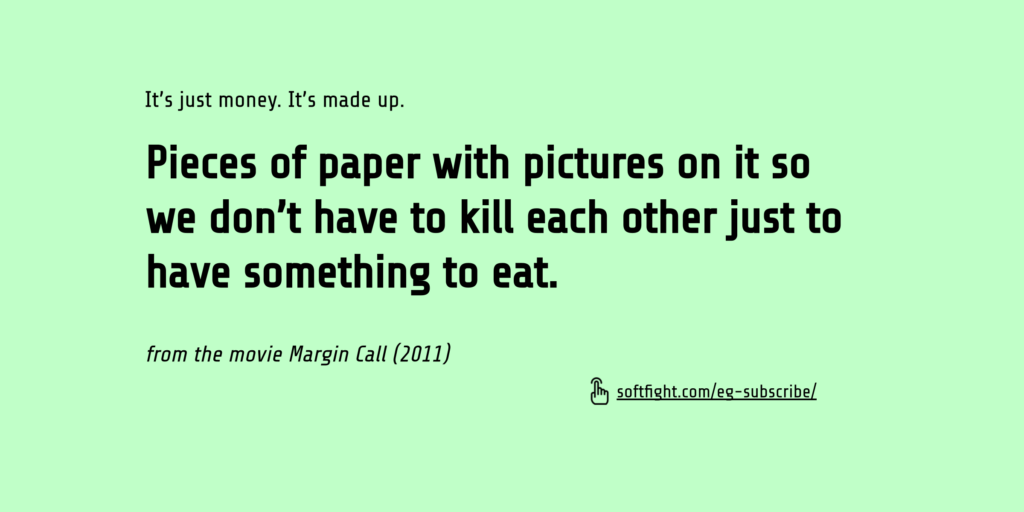It’s just money. It’s made up. Pieces of paper with pictures on it so we don’t have to kill each other just to have something to eat.
It’s not wrong. And it’s certainly no different today than it’s ever been.
1637. 1797. 1819. 1837. 1857. 1884. 1901. 1907. 1929. 1937. 1974. 1987. 1992. 1997. 2000
and whatever we want to call this.
It’s all just the same thing over and over. We can’t help ourselves. And you and I can’t control it, or stop it or even slow it. Or even so slightly alter it. We just react.

This is a dialog from the movie Margin Call (2011). It follows the key people at an investment bank, over a 24-hour period, during the early stages of the 2008 financial crisis.
The history and philosophy of money has helped me understand more about pricing than all the segmentation, strategy and pricing books I read over the years.
Techniques, methods and tools are important when you want to get things done. You will find this aplenty in business books.
But people don’t usually start something unless there is a burning platform beneath their feet.
Numbers, ROI calculations and charts only rarely constitute a burning platform. Something more powerful is needed.
Mindset.
Attitudes.
Personal values.
That’s what we have to work with to get things started.
For pricing, that means the history and philosophy of money.
If you want to dig deeper here, there are a few books I recommend.
Debt: The First 5,000 Years
By: David Graeber
The Silk Roads: A New History of the World
By: Peter Frankopan
Ages of American Capitalism: A History of the United States
By: Jonathan Levy
The House of Morgan: An American Banking Dynasty and the Rise of Modern Finance
By: Ron Chernow
If you want to pick just one, any of these will do.
Each of them is relevant to pricing for different reasons. All of them are well researched, insightful and entertaining at the same time.
WHAT THIS MEANS FOR YOU
If you watch the movie or read any of the books and want to discuss it, I would be very happy to schedule a call to do that 🙂
